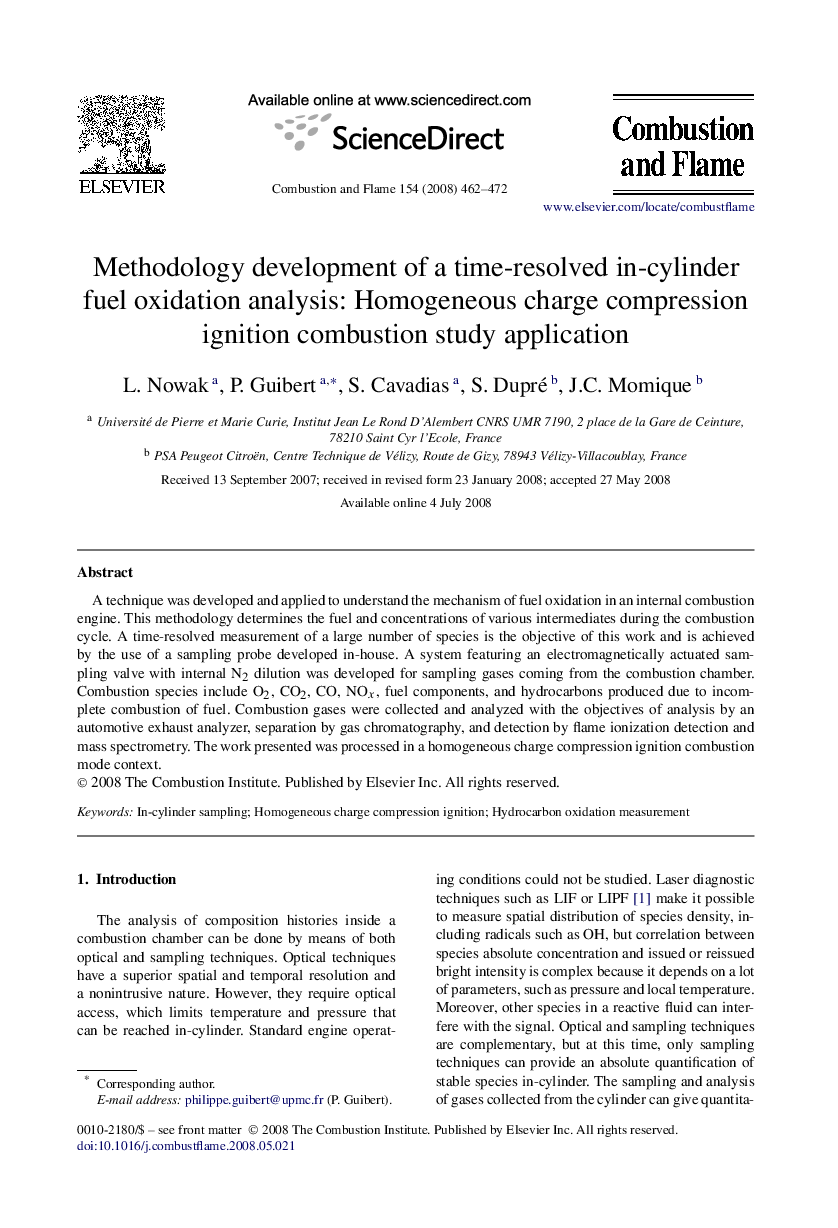| Article ID | Journal | Published Year | Pages | File Type |
|---|---|---|---|---|
| 167829 | Combustion and Flame | 2008 | 11 Pages |
A technique was developed and applied to understand the mechanism of fuel oxidation in an internal combustion engine. This methodology determines the fuel and concentrations of various intermediates during the combustion cycle. A time-resolved measurement of a large number of species is the objective of this work and is achieved by the use of a sampling probe developed in-house. A system featuring an electromagnetically actuated sampling valve with internal N2 dilution was developed for sampling gases coming from the combustion chamber. Combustion species include O2, CO2, CO, NOx, fuel components, and hydrocarbons produced due to incomplete combustion of fuel. Combustion gases were collected and analyzed with the objectives of analysis by an automotive exhaust analyzer, separation by gas chromatography, and detection by flame ionization detection and mass spectrometry. The work presented was processed in a homogeneous charge compression ignition combustion mode context.
